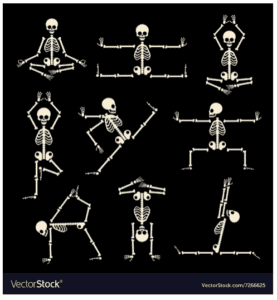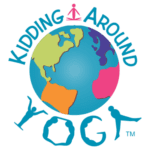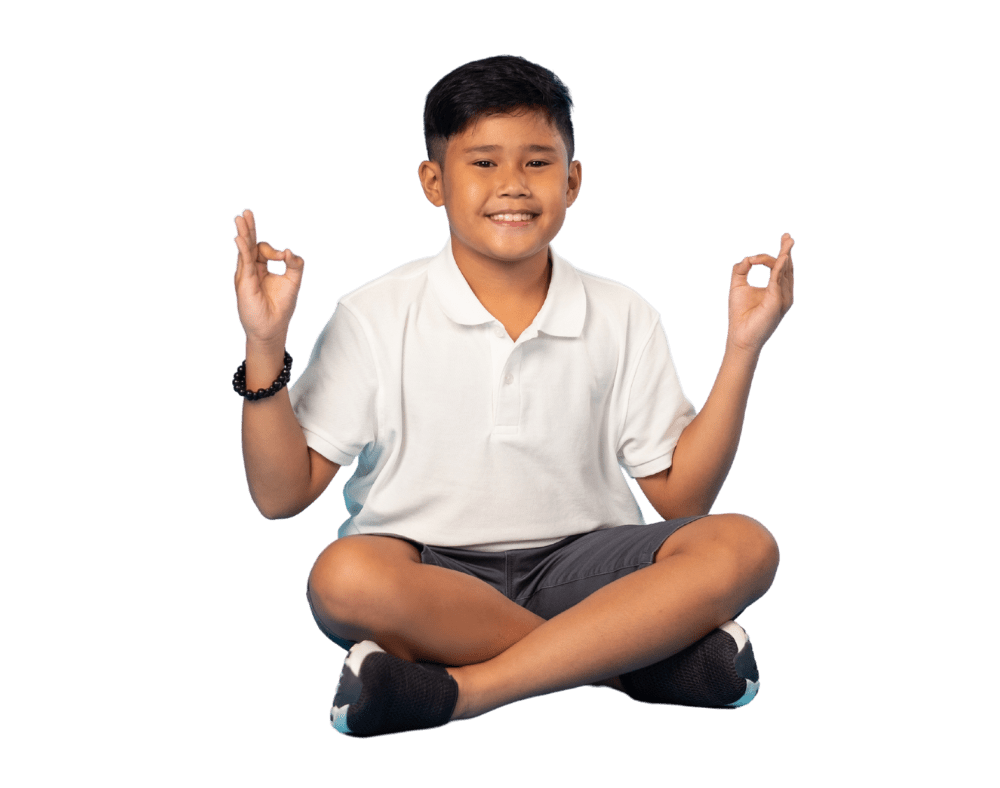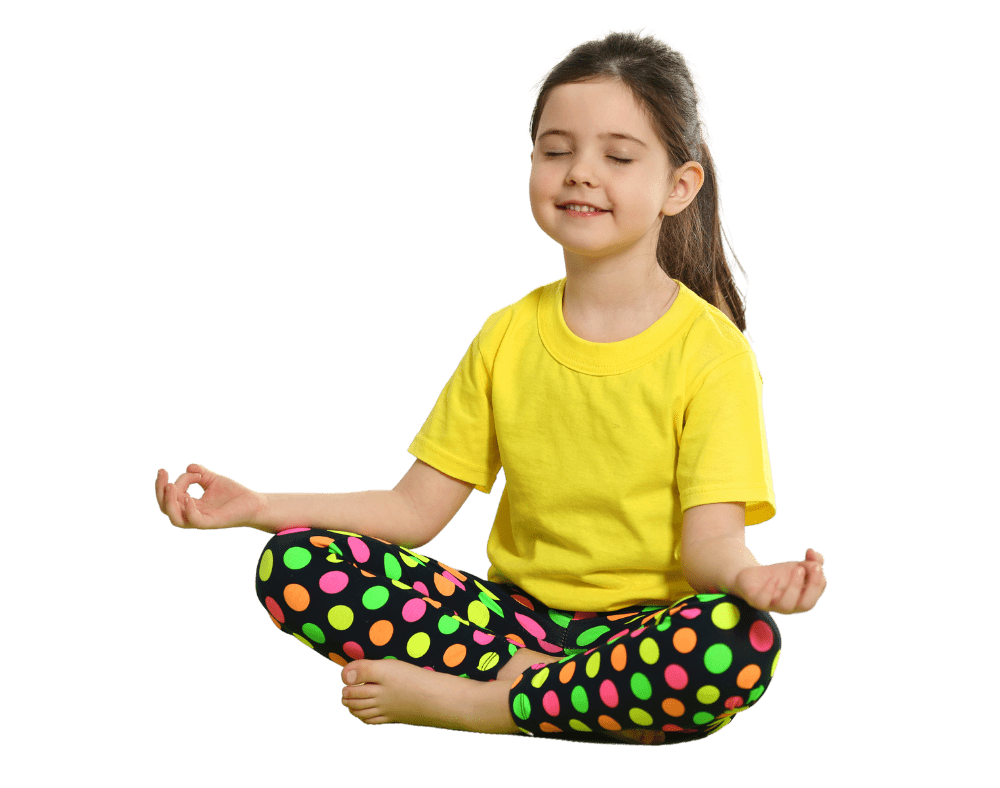On Halloween night we are sure to see many kids wearing skeleton costumes in pursuit of treats. Therefore, October is the perfect time of year to teach kids a little about their bodies, especially with regard to their skeletal system.
Bones help give our bodies shape, work with our muscles to enable movement, and protect other organs. Yes, that is right- bones are living organs too. Even though humans have the same bones, no matter their gender or culture, our bones can have different sizes, lengths and density. The biology of our bones is unique to each of us. Since our bones can be different lengths and shapes, it is one of the reasons every person has his or her own unique body shape.
We use very large bones such as our femur (thigh bone) and our humerus (upper arm bone) to make big movements like stepping backward into a lunge position and raising our arms overhead, as we do in Warrior I. Warrior I is a powerful pose that incorporates all of our strongest bones and muscles. We purposely place our bodies in Warrior I to signify our courage and strength.
Our smaller bones, like those in our fingers, called phalanges, allow us to do smaller movements. An example would be touching the pointer finger to the thumb making a circle as the other three fingers are extend outward. This hand placement is known as Chin Mudra. The circle represents the connection between ourselves with the rest of the universe. It is also a very calming gesture, so it makes sense that many little yogis like to form Chin Mudra with their phalanges when they are meditating.
Our ribcage and our skull are bones that keep safe the soft, vital organs of the body. The ribcage “shields” the heart and lungs. The skull protects our brain.
A child’s skeletal structure is different than that of an adult’s in many fascinating ways! Did you know that children are born with close to 300 bones but adults only have 206? Children are born with more bones, but through a process called ossification, some of the smaller bones grow together and solidify as one bigger bone. This happens mainly in the cranium (skull) and the spinal column.
 Bones are beautiful! Without them we would be blobs on the floor, unable to move. Challenge your little yogis to learn the major bones. When they are competent, name a bone and ask them to “strike a pose” that shows off that bone. For example, if you said “phalanges”, they might respond in “Side Plank” or “Crow pose.” Of course, both answers would be correct because there are so many yoga poses to choose from that emphasize the importance of our fingers. Playing games like this accomplishes many wonderful learning opportunities for children:
Bones are beautiful! Without them we would be blobs on the floor, unable to move. Challenge your little yogis to learn the major bones. When they are competent, name a bone and ask them to “strike a pose” that shows off that bone. For example, if you said “phalanges”, they might respond in “Side Plank” or “Crow pose.” Of course, both answers would be correct because there are so many yoga poses to choose from that emphasize the importance of our fingers. Playing games like this accomplishes many wonderful learning opportunities for children:
- They are dynamically engaged which helps keep them physically active, reduces stress and increases happiness.
- They learn more about their own anatomy, empowering them to treat their bodies with respect and care.
- They learn that some problems can have multiple solutions, which can support them in thinking creatively.
- They listen to other students’ points of view, which teaches them perspective, tolerance, respect, and compassion.
No bones about it, bringing your child to a Kidding Around Yoga class is not only giving him an opportunity to learn a lifetime of good habits, but it is also scary fun!
Like what you read here? There’s so much MORE to explore and learn with Kidding Around Yoga. Check out our website for our live and online teacher trainings, Yoga Alliance-approved 95-hour RCYT trainings, specialty online courses, original music, merchandise, and SO MUCH MORE! For even more about Kids Yoga and physical literacy, check out this episode of the Mindful Conversations with KAY.


